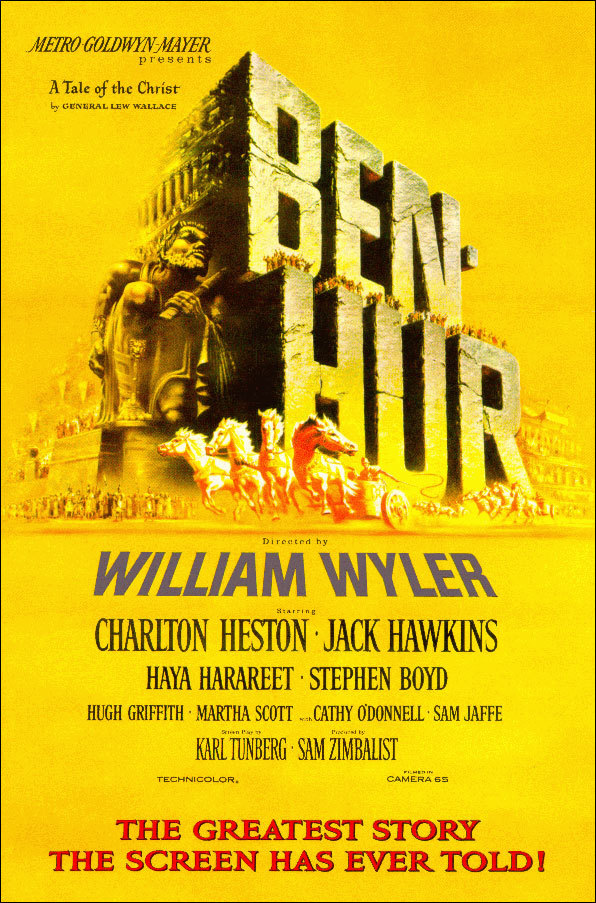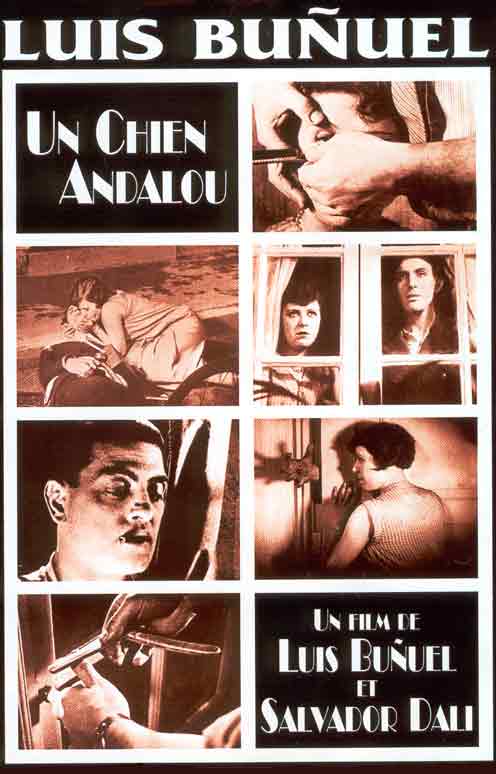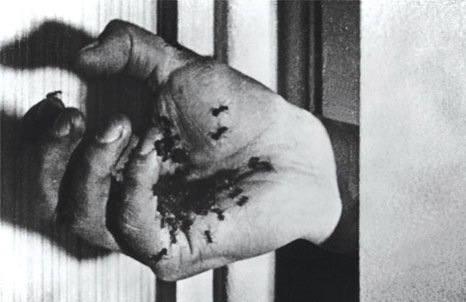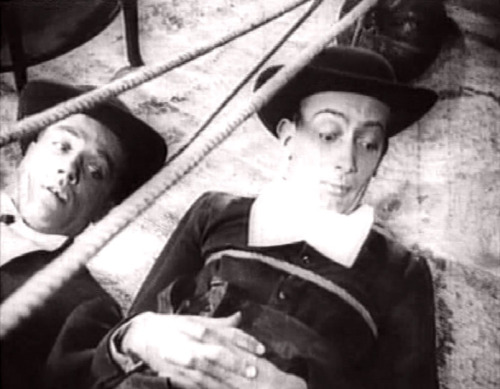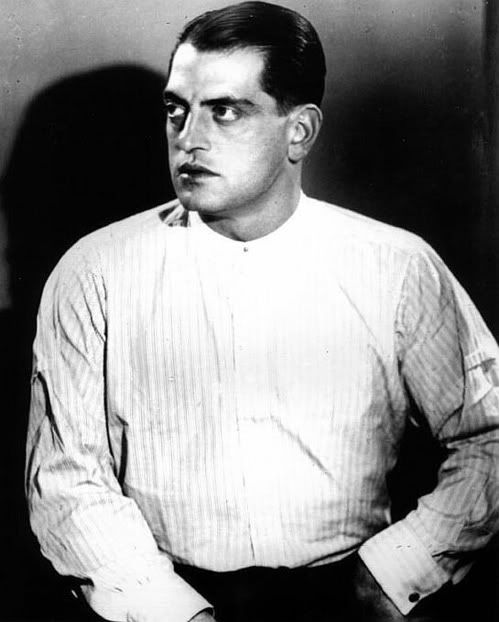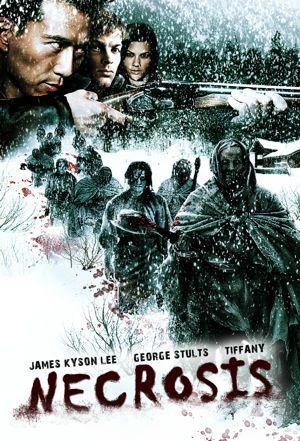Confessions of a Film Junkie: A review of “The Girl Next Door”
By: Brian Cotnoir
Yet another fantastic
film based off of a novel by Author Jack Ketchum is the 2007 Horror/Thriller
“The Girl Next Door” (not to be confused with the 2004 Comedy of the same title). The story of “The Girl Next Door” is loosely
based off of the real life murder (and torture) of a young girl named Sylvia
Likens.
 |
| Actress Blanche Baker plays a straight up psycho! |
So you know how in my review of
Jack Ketchum’s “The Woman” I said the Cleeks were the Most Dysfunctional Family
I have ever seen in a film? Well Ruth
Chandler is definitely the most despicable, sadistic, and Most Evil character I
have ever seen in a film. The fact that
she was based off of a real person absolutely terrifies me. The woman Ruth Chandler’s character was based
off of is
named Gertrude Baniszewski and just as I’ve said all those nasty
things about Ruth Chandler being the Most Evil Character I’ve ever seen in a
film, I believe Gertrude Baniszewsi is the Most Evil person who has ever
lived! I’ve read most of the “Encyclopedia
of Serial Killers” and I think she’s worst than Charles Manson, worst than
Albert Fish, worst than Ted Bundy, worst then John Wayne Gacy. I am absolutely
flabbergasted as to how this woman was not put to death by the state of Indiana
and somehow managed to get paroled after committing these horrific and shocking
crimes, but I digress. The actress who played
Ruth Chandler is Blanche Baker, and one thing that’s great about her
performance is just how nonchalant she is about what she’s doing. She is committing the most serious crimes
imaginable to a child—in front of other children—and she looks like she should
careless and doesn’t think she’ll ever get caught. Her hatred for Meg and the crimes she commits
against her seem entirely unmotivated and that she’s only doing these things
because she feels like she can. That’s a
pretty evil and horrifying character in my eyes.
 |
| Gertrude Baniszewski |
 |
| Blythe Auffarth plays the role of Meg in Jack Kethcum's "The Girl Next Door" |
Then we
have the character Meg, played by actress Blythe Auffarth. Auffarth gives a good performance as well,
and I applaud her because this is not an easy role to play; the helpless
tortured girl. I know I’m just
nitpicking on this next part but, Blythe Auffarth seems too old to be playing a
teenager. Auffarth was 22-Years-Old when
“The Girl Next Door” was filmed, the person her character was based off, Sylvia
Likens, was sixteen. I understand why
they had to cast an older actress for this role, because there’s no way you
would ever want to cast minor for this type of role. It’s kind of like how Stanley Kubrick cast—then
28-year-old—Malcolm McDowell to play the role of 15-year-old Alex DeLarge in “A
Clockwork Orange”. Like I said, I know
I’m nitpicking, but when all the other kids in the film are between 10-15 it’s
really hard to believe that this character claims to be a teenager when they
are very obviously much older.
 |
| Young David Moran struggles with what to do |
Then
we have the character young David Moran.
Young David has to deal with a lot of difficult issues that are better
suited for adults. Unfortunately, the
adults don’t give him any real good advice. He goes to his parents, and he is
told that it’s none of their business to interfere with other families domestic
problems. He goes to the Police and they
pretty much tell him the same thing, by the time anyone decides to listen to
him or help Meg it’s too late. One thing
I like about his character is that he is put a situation that far too many
people are placed in at some point in their lives. I believe that everyone has known at least
one person that has been abused at some point in their lives. When we are teenagers, our closest friends
confide in us their darkest and most tragic secrets, and suddenly we are more
qualified at fourteen to help our friends solve their problems then a trained
professional or responsible adult.
David’s story is also tragic because he wants to help Meg, but he’s
scared to and doesn’t know what he can do.
I hate it in films when a good
character stands by and watches others abuse a helpless victim/character,
but in David’s case I can forgive it.
What teenager would know what to do if he was put in that
situation? How do they overcome their
fears and know what’s the right thing to do?
All David wants to do is help his friend, but no one seems like they
want to help. Even when he tries to do
something right on his own, it just ends up causing more pain and hardships for
the people he’s trying to help.
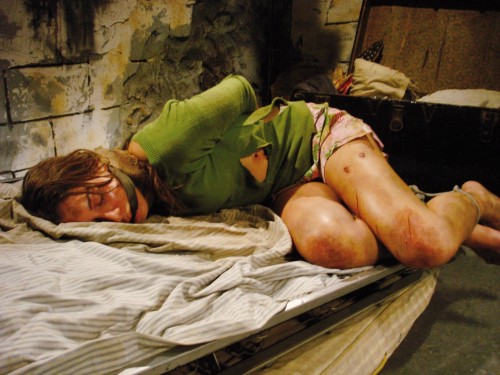 |
| Meg get's savagely abused throughout the film |
By the way, I’ve noticed that
Jack Ketchum likes to have his female character’s tied up in basements in his
stories. Also in a couple of his
novels/films that were adopted from his
works his antagonists are unfeeling and very monotone, and their only
motivation appears to be that they’re just really evil or really bored; anyone
else notice that?
“The
Girl Next Door” is another great horror film adapted from the literary works of
Jack Ketchum, if you ever get a chance to see a movie based off of his works or
read one of his books I seriously recommend you do it. If you want to read my review of Ketchum’s
“The Woman” just click the link below.


